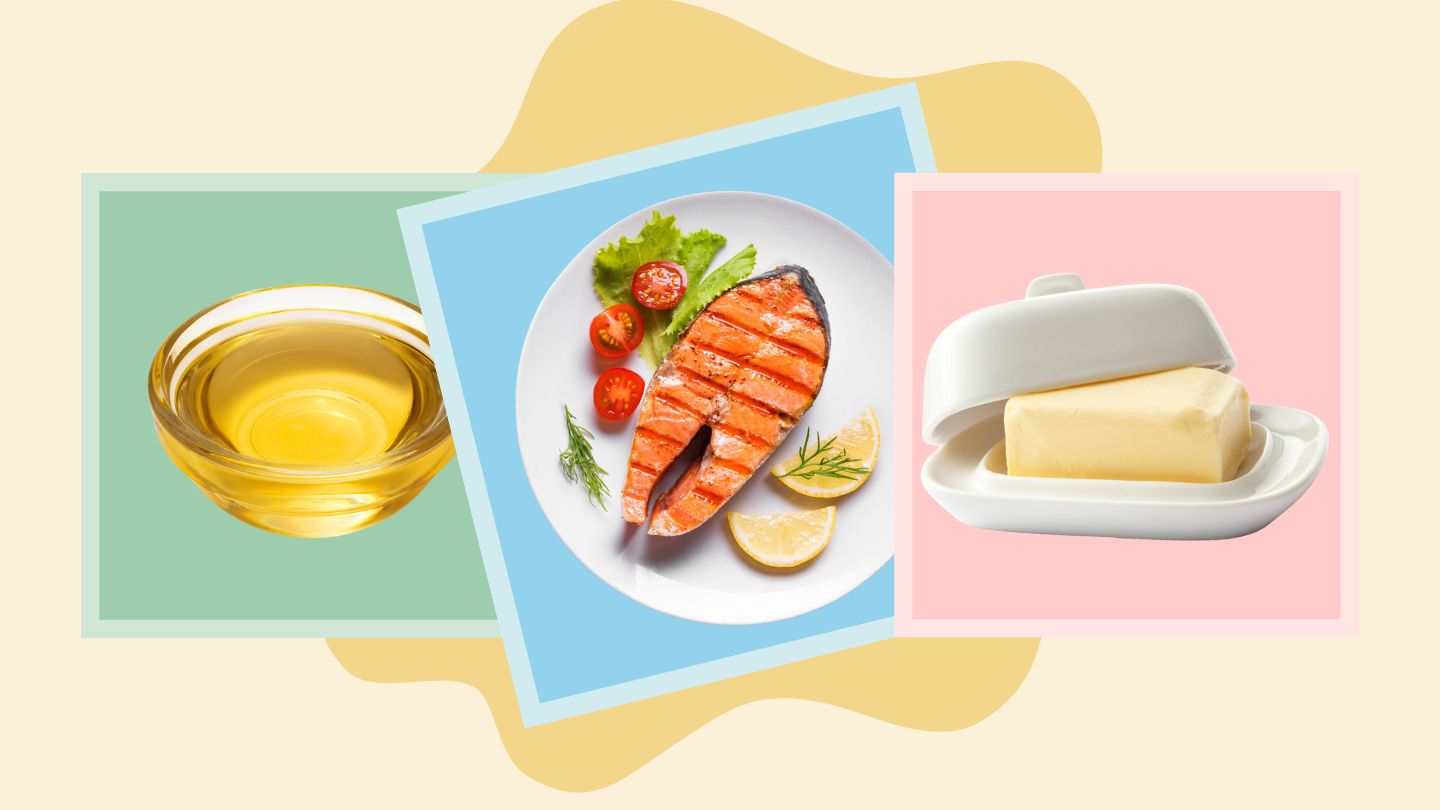Lipids are fats. Although fats were vilified a few decades ago, and many people avoided high-fat foods because they thought eating them would lead to weight gain, we now know it’s not quite that simple.
Our bodies need fat to keep our organs healthy. Fats store energy, so they become a reserve fuel source, according to a StatPearls report. Fats also help your body absorb and use vitamins A, D, E, and K.
There are three main types of dietary fats:
- Unsaturated fats
- Saturated fats
- Trans fats
Some examples of lipids that have health benefits are polyunsaturated fats and monounsaturated fats. These two types of unsaturated fats can help improve your blood cholesterol levels when eaten in moderation and used in place of saturated and trans fats, according to the American Heart Association (AHA).
That brings us to saturated and trans fats. These contribute to higher cholesterol levels and are linked to an increased risk of heart disease. Saturated and trans fats are found in fast food, baked goods, and fatty and processed red meats.
The bottom line: Foods with lipids are not necessarily foods to avoid. But foods with lots of saturated fat, often called “bad fats,” should be eaten sparingly. Look to this list of seven lipid foods to know what to add to your daily diet.
1. Meat and Poultry
Meat has lipids in the form of both saturated and unsaturated fats, depending on the type and cut.
Meats and meat products high in lipids, according to Mayo Clinic, include:
- Beef fat
- Poultry skin
- Lard
- Bacon
- Ribs
Red meats — aka beef, pork, and lamb — generally have more saturated fat than poultry and fish, according to the AHA. For example, the U.S. Department of Agriculture (USDA) says a 3-ounce serving of grilled skirt steak has 26 percent of your daily value of saturated fat while a 3-ounce serving of wild Atlantic salmon has just 5 percent of your daily value.
But that doesn’t mean meat can’t be part of a nutritious diet — simply choose lean cuts. Lean cuts usually have the words “round,” “loin,” or “sirloin” on the package, according to the AHA.
2. Dairy
Dairy products high in lipids, according to England’s National Health Service, include:
- Butter
- Ghee
- Heavy cream
- Full-fat cheeses and yogurts
If you can tolerate dairy, yogurt and cheese are a great way to get several nutrients. However, full-fat dairy products are high in saturated fat, according to the Mayo Clinic.
Most yogurts are full of probiotics, which are linked to better digestion, according to Harvard Health Publishing.
But note this: You’re reducing the benefits of yogurt if you choose one that’s loaded with sugar. Stick to plain yogurt, and add your own fruit for sweetness. To add even more healthy fats, sprinkle nuts and seeds onto your yogurt.
3. Fish
Most fish have lipids and lots of protein, which your body needs. Fatty fish are a top source of omega-3 fats, a type of polyunsaturated fat that’s linked to a reduced risk of heart disease and stroke, according to the AHA.
Fish and shellfish high in omega-3s, according to the National Institutes of Health Office of Dietary Supplements, include:
- Salmon
- Herring
- Sardines
- Mackerel
- Rainbow trout
- Oysters
- Sea bass
The AHA recommends eating two weekly servings of fish, especially fatty fish. But it notes that some can contain mercury, and suggests eating a variety of different types of fish to limit your exposure.
4. Seeds and Nuts
Many seeds and nuts are good sources of lipids and protein, according to the AHA. Almonds, pecans, pistachios, macadamia nuts, walnuts, peanuts, flaxseeds, chia seeds, and pumpkin seeds are all high in unsaturated fats with ample amounts of protein. The AHA points out that walnuts are also a good source of omega-3s.
Aim for unsalted or lightly salted nuts for a nutritious snack. Limit them to a handful (about 1 ounce), and you’ll give your body some good fats without too many calories. You can also add nuts to stir-fries and stews.
5. Plant Oils
Oils are a valuable source of lipids. Most plant-based oils have more good-for-you unsaturated fats, although tropical oils like coconut and palm oil do contain saturated fat.
The AHA recommends these healthy cooking oils when you’re meal prepping:
- Olive oil
- Canola oil
- Avocado oil
- Corn oil
- Peanut oil
- Safflower oil
- Soybean oil
- Sunflower oil
Try stir-frying vegetables in a heart-healthy oil to get fiber (from the veggies) and healthy lipids (from the oil) at the same time.
Avoid or limit other forms of cooking fat that contain unhealthy fats, such as lard, which has saturated fat. Some shortening and stick margarine contain trans fats, so check the labels.
6. Avocados
While avocados do have a lot of fat, it’s the healthy kind that will help you feel full. Avocados have more than five times as much mono- and poly-unsaturated fat as they do saturated fat, according to the USDA.
Avocados are very nutritious. One medium California avocado has one-third of your daily recommended amount of fiber, which, according to Mayo Clinic, can help improve your cholesterol levels. They’re also loaded with vitamin K, folate, vitamin B5, and vitamin B6, and are a good source of vitamin C and potassium.
7. Eggs
Eggs are another food with proteins and lipids. They don’t have much saturated fat (1.6 grams or 8 percent of your daily value per large egg), but they do have a large amount of dietary cholesterol — and for years, people were advised to limit eating eggs for this reason.
But it turns out that the cholesterol in eggs doesn’t appear to affect the cholesterol in the blood for most people, according to Mayo Clinic.
Read the full article here




